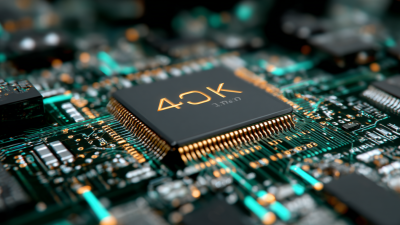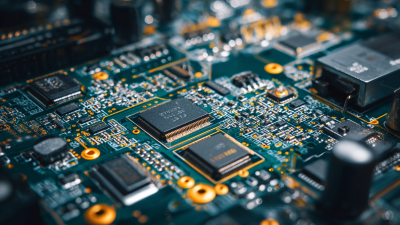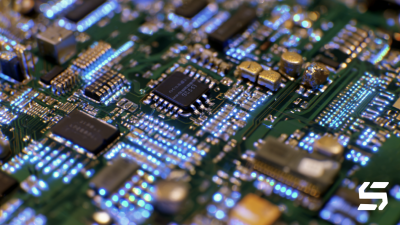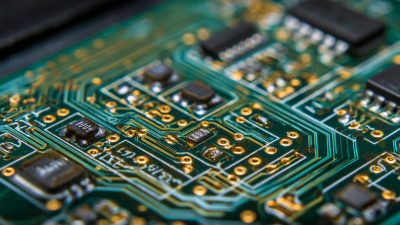- PCB Assembly
- PCB Fab
- Resources
- Company
- Blog
Top Strategies for Maximizing Performance with Flex Circuit Boards in Modern Electronics
In the rapidly advancing landscape of modern electronics, the demand for innovative solutions that enhance performance and reduce space consumption is paramount. Flex Circuit Boards have emerged as a critical component in this evolution, offering unique advantages in terms of flexibility, lightweight design, and efficient space utilization. According to the latest report from MarketsandMarkets, the global flexible printed circuit board market is expected to reach USD 31.6 billion by 2025, growing at a CAGR of 10.3%. This growth is driven by the increasing adoption of Flex Circuit Boards in various applications such as consumer electronics, automotive, and healthcare devices.

As organizations strive to maximize performance while keeping pace with technological advancements, understanding the best strategies to integrate Flex Circuit Boards into their designs has never been more essential. This blog will explore effective methods to leverage the advantages of Flex Circuit Boards, ensuring optimal performance and efficiency in modern electronic systems.
Exploring the Role of Flex Circuit Boards in Reducing Weight and Improving Efficiency in Electronics
Flex circuit boards have revolutionized the landscape of modern electronics, offering significant advantages in weight reduction and efficiency. Their inherent flexibility allows for creative designs that traditional rigid boards cannot accommodate, enabling engineers to create lighter, more compact devices. This is particularly crucial in industries such as aerospace and consumer electronics, where every gram counts. By minimizing the amount of material used without sacrificing performance, flex circuits help manufacturers produce sleeker, more efficient products.
Moreover, the design of flex circuits contributes to better space utilization within devices. Their ability to conform to the available architecture allows for strategic placement of components, which enhances thermal management and electrical performance. This improved efficiency not only leads to better operational outcomes but also extends the lifespan of electronic devices. As technology progresses, the role of flex circuit boards in developing high-performance, lightweight alternatives continues to grow, making them an indispensable component in the electronics of tomorrow.
Innovative Applications of Flex Circuit Boards in Wearable Technology and Consumer Electronics
Flex circuit boards are revolutionizing the landscape of wearable technology and consumer electronics, thanks to their lightweight design and flexibility. In applications ranging from fitness trackers to smartwatches, these circuits provide the ability to create compact and ergonomic devices that seamlessly integrate into daily life. Their conformability allows for innovative form factors, enabling designers to explore new shapes and layouts that were previously challenging with traditional rigid circuit boards.
Furthermore, the growing consumer demand for more feature-rich devices is driving the innovation in flex circuit technology. With advancements in materials and manufacturing techniques, these circuits can now support higher densities and more complex functionalities. As the Printed Circuit Board market is projected to experience a CAGR of over 5.7% from 2025 to 2032, surpassing USD 139.63 Billion by 2032, it's evident that the integration of flex circuit boards is set to play a pivotal role in shaping the future of modern electronics. This trend presents significant opportunities for industries aiming to enhance user experience while maintaining compact, versatile designs.
Performance Metrics: Analyzing the Reliability and Durability of Flex Circuit Boards in Harsh Environments
Flex circuit boards have emerged as a critical component in modern electronics, particularly in applications requiring adaptability in harsh environments. Performance metrics indicate that these boards can withstand extreme conditions, making them invaluable in industries such as aerospace and medical devices. A recent study by IPC found that flex circuits exhibit up to 30% higher reliability compared to traditional rigid boards when subjected to thermal cycling and mechanical stress, highlighting their superior durability.
Tip: When selecting flex circuit boards for high-stress applications, consider materials that offer enhanced thermal stability, such as polyimide. This can significantly improve the lifespan and performance of the circuit in demanding environments.
Moreover, the resistance to moisture and chemicals is another strength of flex circuits, with data showing a 50% reduction in failure rates due to corrosion when compared to conventional PCB technology. This makes them ideal for use in environments where exposure to these elements is unavoidable.
Tip: To further enhance the reliability of flex circuits, employ conformal coating techniques, which can provide a protective barrier against moisture and environmental contaminants. This simple addition can drastically improve performance metrics in critical applications.
Top Strategies for Maximizing Performance with Flex Circuit Boards in Modern Electronics
| Performance Metric | Description | Reliability Rating | Durability Score | Typical Application |
|---|---|---|---|---|
| Thermal Stability | Resistance to high temperatures without performance degradation | 9/10 | 8/10 | Automotive electronics |
| Flexibility | Ability to bend and conform to different shapes | 10/10 | 9/10 | Wearable devices |
| Moisture Resistance | Ability to withstand exposure to humidity and water | 8/10 | 7/10 | Consumer electronics |
| Signal Integrity | Maintaining performance across high-frequency applications | 9/10 | 8/10 | Telecommunication devices |
| Chemical Resistance | Resistance to various chemicals in harsh environments | 8/10 | 8/10 | Industrial applications |
Cost-Effectiveness of Flex Circuit Boards in High-Volume Production: An Industry Perspective
 Flex circuit boards have emerged as a vital component in the realm of modern electronics, especially when it comes to high-volume production. Their intrinsic design flexibility not only allows for complex configurations but also significantly reduces material costs. This adaptability is particularly advantageous in sectors like consumer electronics, automotive, and medical devices, where efficient space utilization is crucial. By consolidating multiple components into a single, integrated design, manufacturers can streamline production processes while minimizing the overall footprint, making flex circuits a cost-effective choice.
Flex circuit boards have emerged as a vital component in the realm of modern electronics, especially when it comes to high-volume production. Their intrinsic design flexibility not only allows for complex configurations but also significantly reduces material costs. This adaptability is particularly advantageous in sectors like consumer electronics, automotive, and medical devices, where efficient space utilization is crucial. By consolidating multiple components into a single, integrated design, manufacturers can streamline production processes while minimizing the overall footprint, making flex circuits a cost-effective choice.
Moreover, the cost-effectiveness of flex circuit boards in high-volume production extends beyond material savings. Their lightweight nature contributes to reduced shipping costs, and their ability to withstand rigorous conditions enhances product longevity, resulting in lower returns and warranty claims. As industries push for faster production timelines and greater efficiency, investing in flex circuit technology can yield substantial returns. The combination of lower production costs and increased operational efficiency positions flex circuit boards as a strategic asset for manufacturers looking to enhance their competitive edge in a rapidly evolving market.
Future Trends: How Advancements in Flex Circuit Technology Will Shape Modern Electronics Design
The future of electronics design is being significantly shaped by advancements in flex circuit technology. As we move towards more compact and efficient devices, the flexibility and lightweight nature of these circuit boards offer unparalleled opportunities for innovative designs. In modern applications, such as wearable technology and automotive electronics, the ability to fit into challenging spaces while maintaining performance becomes indispensable.
Tips for maximizing performance with flex circuit boards include careful consideration of substrate materials and layer counts. Choosing a high-quality substrate can enhance signal integrity and thermal performance, which is crucial for today’s high-frequency applications. Additionally, minimizing layer counts where possible can streamline production and reduce costs without sacrificing functionality.
With the automotive printed circuit board market forecasted to grow significantly, reaching USD 18.14 billion by 2034, manufacturers must stay ahead of the curve. Embracing trends like miniaturization, integration of smart features, and sustainable materials will not only optimize production but also ensure competitiveness in this evolving landscape. Keeping an eye on emerging startups and innovative technologies will provide valuable insights into the future trajectory of electronics manufacturing.

Related Posts
-

Exploring the Future of Best Led Circuit Board Innovations and How to Integrate Them by 2025
-

What is the Importance of Best Circuit Board Assembly in Modern Electronics Industry
-

Explore the Future of Prototype Circuit Boards at the Successful Conclusion of the 137th Canton Fair
-

Mastering the Art of Best Printed Circuit Board Assembly Step by Step Guide
-

Global Solutions in Circuit Board Assembly: Embracing Excellence from China
-

Ultimate Guide to Choosing the Best Flexible Circuit Board for Your Project
Phone
 WhatsApp
WhatsAppEmail
Offer Electronics Manufacturing All-in-One
PCBONLINE® is a registered trademark or service mark of pcb online limited or its affiliates.
Copyright © 2001-2024 Pcb Online Limited. All rights reserved